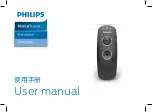
P-250
37
Basic Operation
■
Effect Structure
The P-250 features system effects and inser-
tion effects.
System effects
The system effects are applied to all parts globally.
The amount of effect can be set per part. The P-
250 system effects include one reverb and one
chorus. The amount of reverb and chorus is set via
the “ReverbSend” (page 66) and “ChorusSend”
(page 67) parameters in the “VOICE EDIT” menu.
• Reverb
Reverb can add a natural ambience and space to a
sound, simulating the natural reverberation of a con-
cert hall or live venue.
Refer to the “XG Effect Type list” on page 12 of the
separate “Data List” for a complete list of reverb types
included in the P-250.
• Chorus
Chorus adds spread and spaciousness, and is an effect
that modifies the sound of a single instrument to simu-
late a group of the same instrument.
Refer to the “XG Effect Type list” on page 12 of the
separate “Data List” for a complete list of chorus types
included in the P-250.
Insertion effects
Insertion effects are applied to specified parts. The
P-250 features three insertion effect channels,
which means that you can apply the insertion
effects to three parts.
The amount of insertion effect is adjusted via the
“Dry/WetBalance” parameter (page 68) in the
“VOICE EDIT” menu.
■
Using the Effects
Reverb
Press the [REVERB] button repeatedly to toggle
the reverb on and off.
When the reverb is turned on, the indicator above
the [REVERB] button lights up.
Even if the reverb effect is turned off, a “soundboard
reverb” effect is applied when you select the GRAND
PIANO1 or GRAND PIANO2 voice group.
Reverb On/Off is a performance parameter (page
30).
Chorus
Press the [CHORUS] button repeatedly to toggle
the chorus on and off.
When the chorus is turned on, the indicator
above the [CHORUS] button lights up.
You can turn the chorus effect on or off by pressing the
[CHORUS] buttons on the panel or by setting the
“ChorusOnOff” parameter in the “VOICE EDIT” menu
(see page 67). The [CHORUS] button setting on the
panel is cancelled if you select another voice. The
“ChorusOnOff” parameter setting is saved for each
voice. That is, if you select a voice, the chorus setting
is automatically turned on or off, depending on the
saved chorus setting.
VOICE/PERFORMANCE
TEMPO
SONG
SONG BALANCE
MASTER VOLUME
MIDI SETTING
CHORUS
REVERB
SPLIT
CONTRAST
XG
8
16
B
YES
NO
D
A
C
BASS
15
7
PERFORM. FILE
MASTER EQ EDIT
VARIATION
PERFORMANCE
VOICE EDIT
VIBES
GUITAR
14
6
SYNTH. PAD
13
5
E.PIANO3
HARPSI.
CLAVI.
ORGAN 1
EXIT
9
B
A
1
G.PIANO 1
EX.TRACKS
SONG FILE
PANEL LOCK
TRACK1
TOP
SONG SELECT
KEYBOARD
SONG
MIN
MAX
REC
START/STOP
SYNCHRO START
NEW SONG
TRACK2
MIDI OUT
ORGAN 2
10
2
G.PIANO 2
STRINGS
11
3
E.PIANO1
CHOIR
12
4
E.PIANO2
OTHER SETTING
DOWN
SONG SETTING
UP
[CHORUS]
[REVERB]
TIP
The P-250 also has one channel of variation effect, which
can be used for the system effect or insertion effect. Refer
to the “XG Effect Type List” on page 12 of the separate
“Data List” for more information on the type of effects you
can use for this channel. You can control the variation effect
only through MIDI messages.
TIP
You can select a reverb type via the “ReverbType” parameter
in the “VOICE EDIT” menu, and adjust the reverb amount for
the selected voice via the “ReverbSend” parameter
(page 66).
TIP
You can select a chorus type via the “ChorusType” parameter
in the “VOICE EDIT” menu, and adjust the chorus amount for
the selected voice via the “ChorusSend” parameter. You can
also turn the chorus on or off by using the “ChorusOnOff”
parameter. (page 66, 67)
Summary of Contents for P-250
Page 56: ...MEMO 56 P 250 Edit Operation ...
Page 80: ...MEMO 80 P 250 Appendix ...
















































